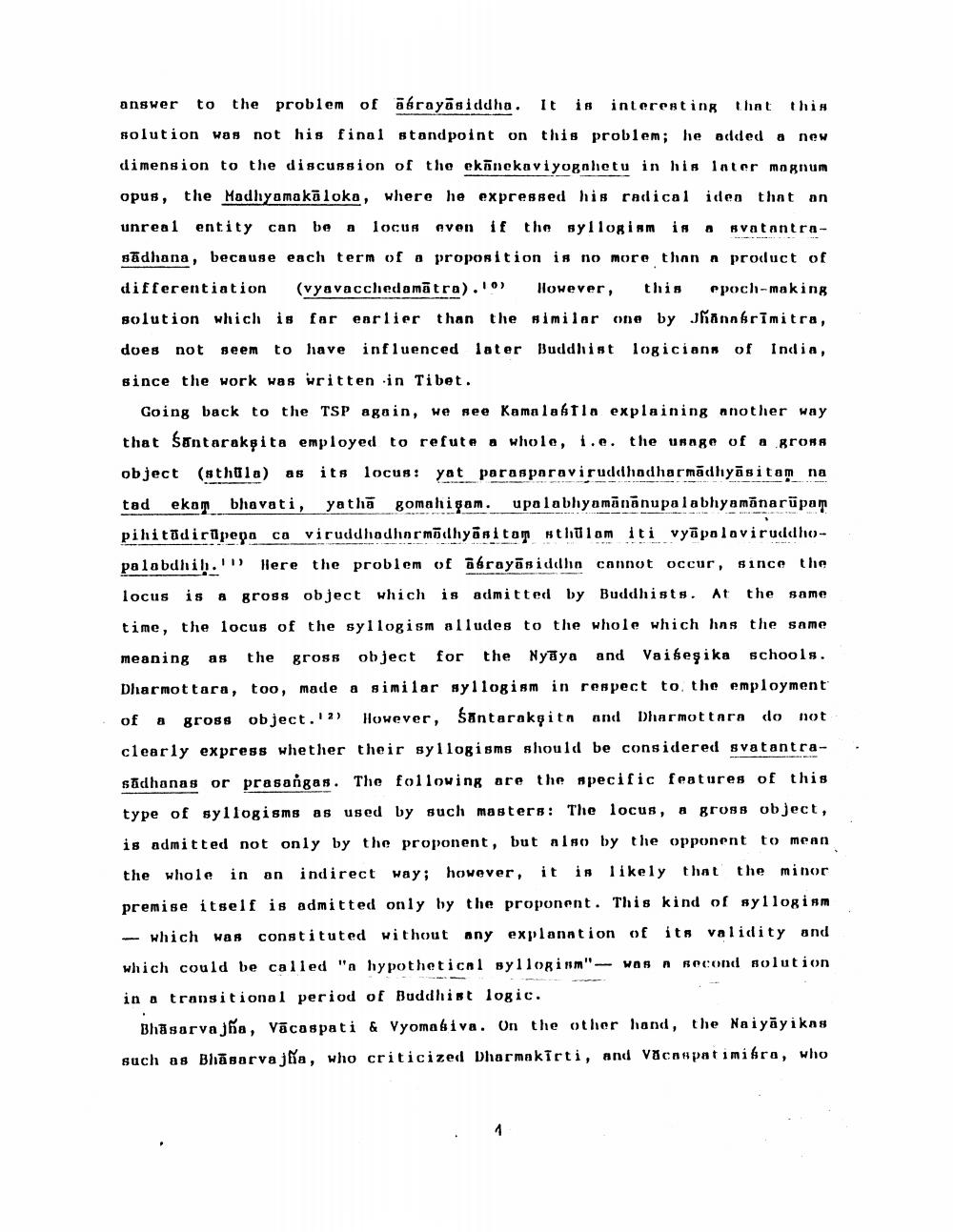________________
answer to the problem of ābrayāsiddha. It is interesting that this solution was not his final standpoint on this problem; he added a new dimension to the discussion of the ekānekaviyognlietu in his inter mognum opus, the Madhyamakaloka, where he expressed his radical ideo that an unreal entity can be a locus even if the syllogism if svatantrasadhana, because each term of a proposition is no more than a product of differentiation (vyavacchedamātra). However, this epoch-making solution which is far earlier than the similar one by Jñannkrimitra, does not seem to have influenced later Buddhist logicians of India, since the work was written in Tibet.
Going back to the TSP again, we see Kamalasfla explaining another way that Sontarakṣita employed to refute a whole, i.e. the usage of a gros object (sthula) as its locus: yat parasparaviruddhadharmādhyāsitam na tad ekor bhavati, yathā gomahişam. upalabhyamānānupalabhyamănarūpam pihitüdirlpepoca viruddhadhormodhyānitor thūlom iti vyāpolaviruddhopalabdhih. Here the problem of abrayās idilho cannot occur, since the locus is a gross object which is admitted by Buddhists. At the same time, the locus of the syllogism alludes to the whole which in the same meaning as the gross object for the Nyaya and Vaibeş ika schools. Dharmottara, too, made a similar syllogism in respect to the employment of a gross object.'2) However, Santarakpitn and Dharmottara do not clearly express whether their syllogisms should be considered svatantrasidhanas or prasangas. The following are the specific features of this type of syllogisms as used by such masters: The locus, a gross object, is admitted not only by the proponent, but also by the opponent to mean the whole in an indirect way; however, it is likely that the minor premise itself is admitted only by the proponent. This kind of syllogism - which was constituted without any explanntion of its validity and which could be called "A hypothetical sylloginm" was Rocond solution in a transitional period of Buddhist logic.
Bhisarvajña, Vācospati & Vyomasiva. On the other hand, the Na iyāyikas such as Bhasarvajna, who criticized Dharmakirti, and Vacanpatimikro, who




